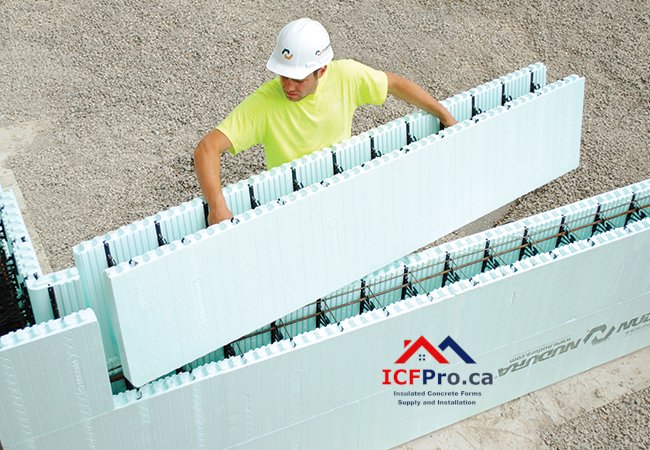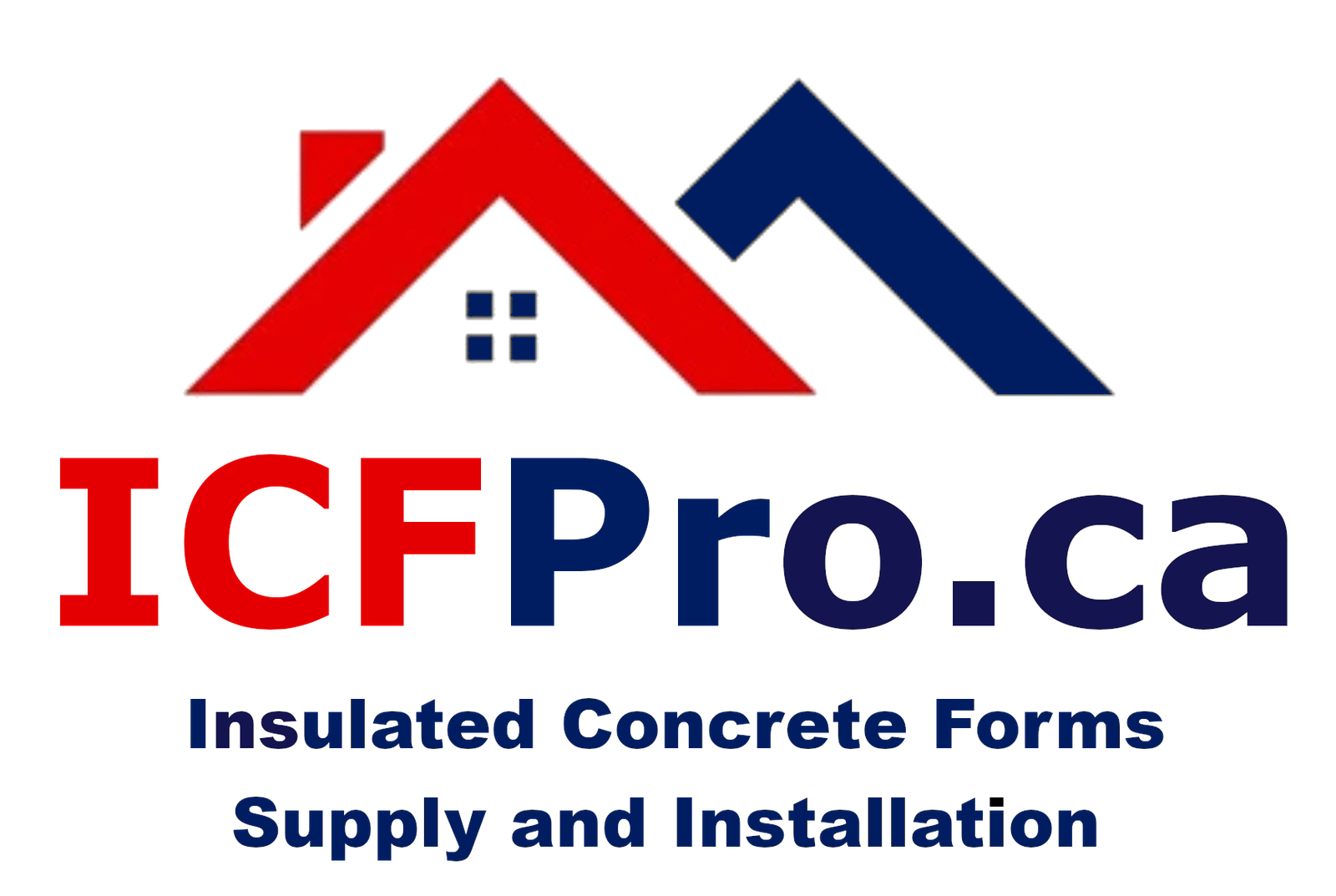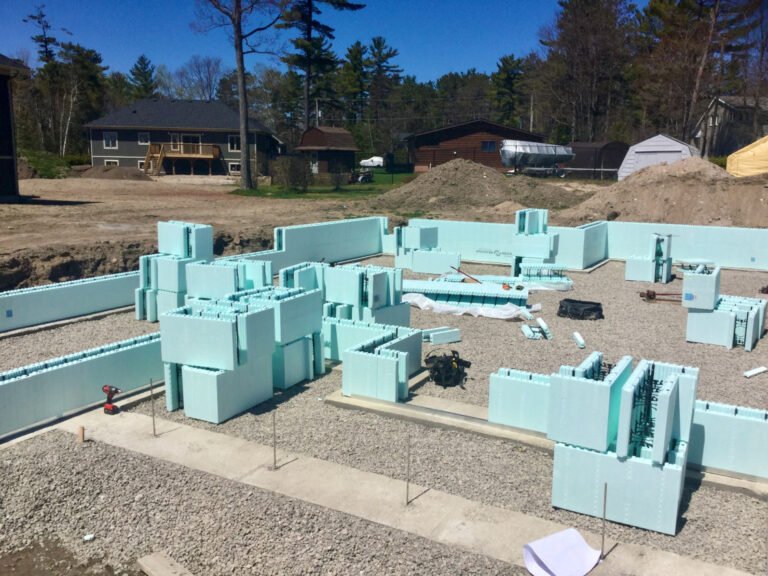ICFPro.ca is a division of ICFhome.ca - Phone 1 866 868-6606 - Direct Line 1 705 533-1633 - Email: info@icfhome.ca
What is ICF Construction? A Homeowner’s Guide to Insulated Concrete Forms

From: Harvey Juric, ICFhome.ca
705 533-1633 | info@icfhome.ca
Congratulations on considering—or perhaps already committing to—a home built with Insulated Concrete Forms (ICF). If you’re reading this, you’ve likely heard whispers about ICF’s “superior insulation” or “hurricane-resistant walls.” But let’s cut through the jargon and answer the real question: What is ICF construction, and why should you care?
As a builder who’s spent decades wrestling with Ontario’s moody climate and homeowners’ even moodier expectations, I’ll tell you this: ICF isn’t just another trend. It’s a revolution in how we think about strength, efficiency, and comfort in a home. But like any relationship, it has its quirks. Let’s pull back the curtain.
ICF 101: NO, IT’S NOT LEGO FOR ADULTS (BUT CLOSE ENOUGH)
ICF stands for Insulated Concrete Forms. Imagine stacking giant foam blocks—like overgrown Lego pieces—into the shape of your walls, then filling the hollow core with concrete. The foam stays in place permanently, acting as insulation on both sides of the concrete. The result? Walls thicker than a winter parka, quieter than a library, and tougher than a toddler’s bedtime negotiations.
But here’s the kicker: ICF homes aren’t just concrete bunkers. The foam layers are precision-engineered to interlock, creating airtight walls that laugh in the face of drafts, mold, and even wildfires. Think of it as a thermos for your living room—keeping heat in during winter and out during summer.
WHY ICF? LET’S TALK ABOUT YOUR HOUSE’S MIDLIFE CRISIS
Traditional wood-frame homes age like milk. They creak, crack, and warp as lumber shrinks, humidity fluctuates, and gravity does its thing. Remember that letter I wrote about floors squeaking at 4 a.m. or drywall cracks appearing like magic? With ICF, many of those headaches vanish.
The Concrete Advantage
- No Shrinkage Drama: Wood framing is like that friend who promises to show up on time but never does. Green lumber shrinks as it dries, causing gaps, squeaks, and popped nails. ICF? Concrete doesn’t shrink. Once it’s poured, it’s as stable as a grumpy cat in a sunbeam.
- Humidity’s Worst Enemy: Wood swells and shrinks with moisture like a sponge in a rainstorm. ICF walls don’t absorb moisture, so doors won’t stick in summer, and baseboards won’t gap in winter.
- Silence, Please: Ever hear your neighbor’s dog barking… from three blocks away? ICF’s mass blocks sound better than noise-canceling headphones.
Energy Efficiency: Your Wallet Will Thank You
ICF homes are 40–60% more energy-efficient than stick-built houses. Here’s why:
- R-Value Royalty: The foam insulation in ICF walls boasts an R-value of R-22+, compared to wood framing’s measly R-13 (and that’s if the insulation is perfectly installed, which it never is).
- Thermal Mass Magic: Concrete absorbs heat during the day and releases it slowly at night, smoothing out temperature swings. No more thermostat wars!
- Airtight = Allergy-Free: ICF’s seamless construction stops drafts and pollen at the door. Pair it with a heat recovery ventilator (HRV), and you’ve got fresh air without the energy waste.
“BUT HARVEY, ISN’T ICF… WEIRD?”
Let’s tackle the myths:
Myth 1: “ICF Homes Look Like Soviet Bunkers.”
False. ICF walls are hidden behind the same siding, brick, or stone as any home. Want a farmhouse chic aesthetic? Go for it. Prefer ultra-modern glass? No problem. The only difference is what’s inside the walls.
Myth 2: “It’s Too Expensive.”
Upfront, ICF adds 3–5% to construction costs. But let’s do math:
- Slash heating/cooling bills by 30–50%.
- Qualify for green building rebates.
- Avoid future repair costs (rot, mold, insect damage).
Over 30 years, ICF pays for itself—and then some.
Myth 3: “Concrete Is Bad for the Environment.”
Concrete’s carbon footprint is a valid concern, but ICF’s energy savings offset it within 5–10 years. Plus, ICF homes last centuries, not decades. Talk about sustainable.
THE DOWNSIDE? YES, EVEN ICF HAS QUIRKS
No building method is perfect. Here’s what to watch for:
Truss Uplift: The Ceiling’s Silent Rebellion
Even in ICF homes, roof trusses can shift due to temperature differences between attic and living spaces. The result? A hairline crack where the ceiling meets the wall. Sound familiar? We mitigate this with “resilient channels” that let drywall flex, but Mother Nature always gets a vote.
Concrete Cracks: Not All Heroes Wear Capes
Concrete will develop hairline cracks—it’s inevitable. But unlike wood, these cracks don’t compromise structural integrity. Think of them as your home’s laugh lines.
The Art of Patience
ICF builds take slightly longer than wood framing (foam blocks must be braced meticulously before pouring). But would you rush a masterpiece?
LIVING IN AN ICF HOME: TIPS FROM THE TRENCHES
- Humidity Control: ICF doesn’t magically fix indoor air quality. Use that HRV, and keep humidity between 35–60%. Your hardwood floors and sinuses will thank you.
- Caulk Is Your Friend: Inspect exterior joints annually. Re-caulk gaps to keep moisture out—it’s cheaper than fixing rot later.
- Embrace the Quiet: You’ll notice the silence first. Then the lack of drafts. Then the energy bills. It’s a cascade of joy.
THE BOTTOM LINE
ICF construction isn’t for everyone. If you want a cheap, disposable house to flip in five years, stick with wood. But if you’re building a home—a place to weather storms, host holidays, and age gracefully—ICF is the way.
Yes, you’ll pay a bit more upfront. Yes, you’ll need patience during construction. But decades from now, when your grandkids are marveling at how your house still feels brand-new, you’ll know it was worth it.
Final Thought: Building with ICF is like marrying your high school sweetheart—durable, dependable, and full of hidden strengths. And just like marriage, it requires a little maintenance. But hey, nothing worth having comes easy.
Here’s to your future home—may it be as solid as the concrete in its walls and as warm as the memories you’ll make inside.
Sincerely,
Harvey Juric
ICFhome.ca
705 533-1633 | info@icfhome.ca


